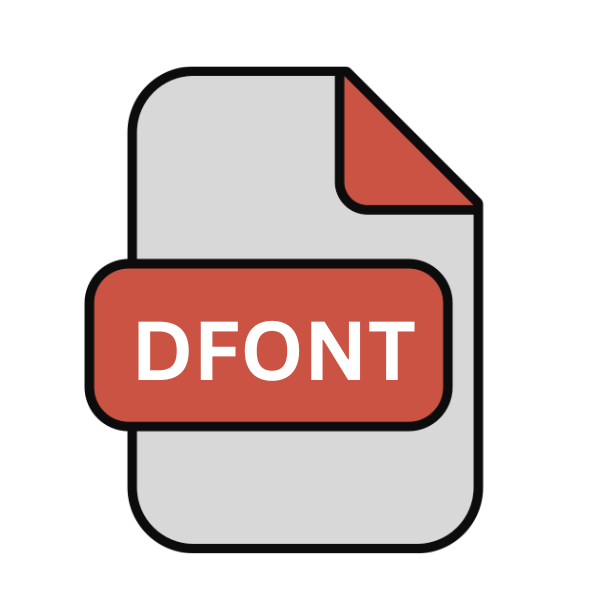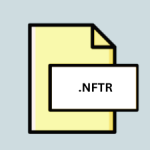.DFONT File Extension

Mac OS X Data Fork Font
| Developer | Apple |
| Popularity | |
| Category | Font Files |
| Format | .DFONT |
| Cross Platform | Update Soon |
What is an DFONT file?
The .DFONT file extension is primarily associated with Mac OS X, where it serves as a container format for TrueType and OpenType fonts.
Unlike conventional font file formats, such as .TTF or .OTF, which utilizes a single data stream, .DFONT files employ a data fork structure, consisting of multiple resource forks encapsulated within a single file.
This distinctive architecture enables .DFONT files to store font data along with additional metadata, enhancing compatibility and functionality within the Mac OS X environment.
More Information.
The inception of the .DFONT file extension can be traced back to the early 2000s, coinciding with the transition from Mac OS 9 to Mac OS X.
During this period, Apple sought to modernize its operating system architecture while preserving backward compatibility with existing font assets.
Consequently, the .DFONT format was introduced as a means to encapsulate fonts within a unified container, facilitating efficient management and distribution of font resources across different applications and system versions.
Origin Of This File.
The .DFONT file format originated within the Macintosh operating system lineage, specifically introduced with the advent of Mac OS X.
As Apple transitioned towards a Unix-based architecture with Mac OS X, the need arose for a font container format that could seamlessly integrate with the new system while retaining compatibility with legacy font resources.
Thus, the .DFONT file extension emerged as a solution to bridge the gap between traditional Macintosh font structures and the evolving requirements of Mac OS X.
File Structure Technical Specification.
At its core, a .DFONT file comprises a collection of resource forks, each containing specific font data and metadata.
This modular structure allows for the storage of multiple font variants, such as regular, bold, italic, and bold italic, within a single file.
.DFONT files may include auxiliary information, such as font licensing details, kerning tables, and glyph metrics, enhancing the overall versatility and functionality of the font package.
Despite its unique data fork architecture, .DFONT files adhere to standard font specifications, ensuring compatibility with font rendering engines and typographic utilities.
How to Convert the File?
Converting .DFONT files to other font formats can be achieved using various methods and tools available across different platforms. Here are some steps involved in converting .DFONT files to alternative font formats compatible with Windows, Linux, Android, iOS, and other operating systems.
1. Using Font Conversion Utilities:
FontForge: FontForge is a powerful open-source font editor that supports font conversion among various formats. To convert a .DFONT file using FontForge:
- Launch FontForge and open the .DFONT file from the File menu.
- Once the font is loaded, go to the File menu and choose “Generate Fonts.”
- Select the desired output format (e.g., TrueType or OpenType) and save the converted font files to your desired location.
2. TransType: TransType is a commercial font conversion software available for both macOS and Windows. To convert a .DFONT file using TransType:
- Open TransType and import the .DFONT file by dragging it into the TransType window or using the File menu.
- Choose the output format for conversion (e.g., TrueType or OpenType).
- Customize any conversion settings if necessary.
- Proceed with the conversion process and save the converted font files to your desired location.
3. Using Online Font Conversion Services:
Several online font conversion services offer the convenience of converting .DFONT files to alternative formats without the need for software installation. Some popular online conversion tools include Online Font Converter and Convertio. To convert a .DFONT file using an online service:
- Visit the website of the online font conversion service.
- Upload the .DFONT file to the conversion tool.
- Select the desired output format (e.g., TrueType or OpenType).
- Initiate the conversion process and download the converted font files once the conversion is complete.
4. Using Font Management Applications:
Certain font management applications offer built-in conversion capabilities, allowing users to convert .DFONT files to alternative font formats seamlessly. Examples of font management applications with conversion features include Suitcase Fusion and FontExplorer X. To convert a .DFONT file using a font management application:
- Open the font management application and import the .DFONT file into your font library.
- Locate the imported .DFONT file within the application’s interface.
- Choose the option to export or convert the .DFONT file to your desired output format (e.g., TrueType or OpenType).
- Specify the conversion settings if applicable and proceed with the conversion process.
Using Command-Line Tools (Linux):
For Linux users, command-line tools like FontForge can be utilized to convert .DFONT files to alternative font formats. To convert a .DFONT file using FontForge on Linux:
- Launch the terminal and navigate to the directory containing the .DFONT file.
- Use the FontForge command-line interface to initiate the conversion process, specifying the input and output file paths along with any relevant options.
- Execute the conversion command and verify the generated font files in the specified output location.
Advantages And Disadvantages.
Advantage:
- Consolidated Font Management: The .DFONT format enables users to organize and manage multiple font variants within a single file, streamlining font installation and distribution processes.
- Enhanced Compatibility: By encapsulating font data and metadata within a unified container, .DFONT files ensure robust compatibility across different Mac OS X applications and system versions.
- Comprehensive Font Packaging: .DFONT files can include supplementary information, such as licensing details and typographic features, facilitating comprehensive font packaging and distribution.
Disadvantage:
- Limited Cross-Platform Compatibility: Despite its prevalence within the Mac OS X ecosystem, .DFONT files may encounter compatibility issues when used on non-Apple platforms, restricting their utility in cross-platform environments.
- Encapsulation Overhead: The data fork structure of .DFONT files may introduce additional overhead in terms of file size and resource consumption, particularly for large font collections or complex typographic assets.
- Dependency on Legacy Systems: While .DFONT files offer backward compatibility with legacy Macintosh font resources, their reliance on traditional file structures may hinder seamless integration with modern font management workflows and technologies.
How to Open DFONT?
Open In Windows
.DFONT files can be accessed on Windows using third-party software like MacDrive or Paragon HFS+.
These tools enable Windows users to interact with Mac-formatted disks and files, including .DFONT font containers, ensuring compatibility and seamless integration across different operating systems.
Open In Linux
Linux users can access .DFONT files using utilities like FUSE (Filesystem in Userspace), enabling them to mount Mac-formatted volumes and interact with .DFONT font containers within a Linux environment.
Cross-platform font conversion tools like FontForge offer compatibility for opening .DFONT files on Linux systems.
Open In MAC
On macOS, .DFONT files can be directly opened and installed using the native Font Book application.
Users can simply double-click on a .DFONT file to preview its contents and install individual font variants or the entire font collection with ease, ensuring seamless integration into the macOS environment.
Open In Android
To open .DFONT files on Android, users need to convert them into compatible font formats like .TTF or .OTF using conversion tools or online services.
Once converted, the font files can be installed or utilized within Android applications, ensuring consistent typography across different platforms and devices.
Open In IOS
Opening .DFONT files on iOS devices require conversion to compatible font formats such as .TTF or .OTF. Users can achieve this by using conversion tools or online services to convert .DFONT files into iOS-compatible fonts.
Once converted, the fonts can be installed and used within iOS applications seamlessly.
Open in Others
For other platforms, opening .DFONT files may require conversion to compatible font formats using conversion tools or online services.
Once converted, the font files can be installed and utilized within respective operating systems or applications, ensuring consistent typography and compatibility across diverse platforms and environments.













